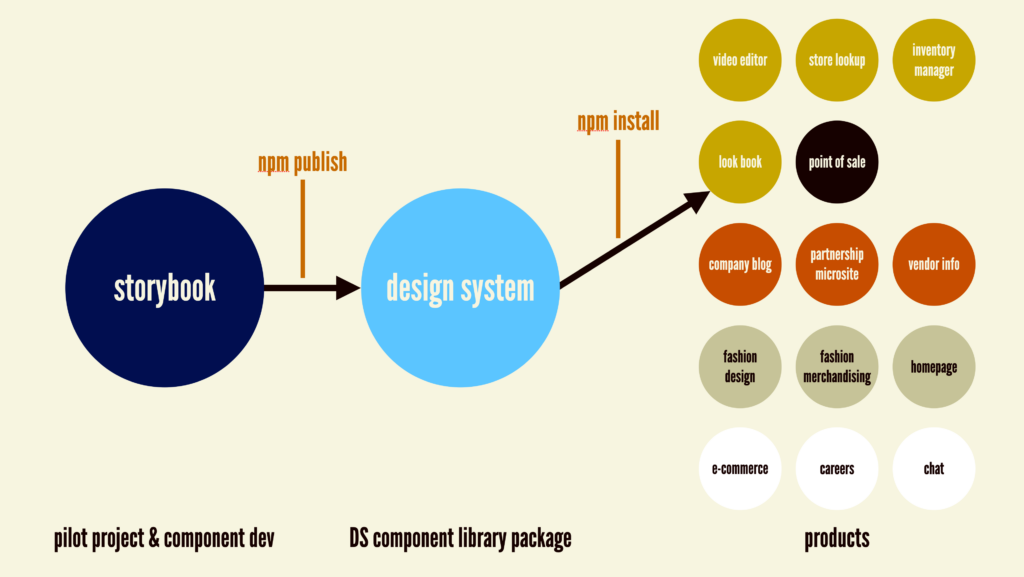Table Of Content

It’s a method that’s been around for a while, but it’s been gaining a lot of popularity in recent years. The concept was first introduced by Brad Frost, a web designer and developer, in 2013. He used the analogy of atoms, molecules, and organisms to explain how to create design systems. In this article, we have discussed the concept of atomic design and its application in creating a cohesive user experience across various industries. We have seen that atomic design is a methodology for creating design systems, it’s a way of thinking about the design process that helps to create a consistent and cohesive user experience. Including front-end code leads to authors writing it more consistently, but that doesn’t guarantee perfection.
Design language

How do lightboxes, breadcrumbs, and carousels translate to smaller viewports and alternate input types? But even before the launch party confetti is swept up, the calls start coming in. ” cry the users, who spent years learning the previous interface and functionality. The spirit of modularity is weaving its way into every aspect of the web creation process and having profound effects on organizations’ strategy, process, content, design, and development. Ultimately, a project’s level of effort is much better determined by the functionality and components contained within those pages, rather than on the quantity of pages themselves.
Atomic design is for user interfaces
Because of this, we can create systems that promote consistency and scalability while simultaneously showing things in their final context. And by assembling rather than deconstructing, we’re crafting a system right out of the gate instead of cherry picking patterns after the fact. Things start getting more interesting and tangible when we start combining atoms together.
How do you build design components for your visual identity system?
It contains components of frequently occurring blocks or even entire pages. Using the settings in Figma, you can easily manage the set of necessary components inside this block. On the other pages, as in the previous file, each component is separate, only with styles and a mini-guide for each component already connected.
An empathetic workflow
Rather than designing collections of web pages, atomic design begins with the basic UI components known as atoms (buttons, menu items, etc.) and gradually builds the entire UI. If you’ve been in the design world for a minute, you’ve probably heard many experts point to atomic design as a methodology for effective design systems. It’s a process that bridges a gap between developers and designers. Use simple atomic components to compose higher-level molecules and organisms. Create complex UIs through composition, not just added complexity in standalone components. React is designed around building UIs through small, encapsulated components.
A pattern library is a collection of reusable UI components that can be used to create designs quickly and efficiently. Organisms, the third level, are made up of a combination of molecules and create even more complex components. For example, a header, main navigation, and search bar are molecules but together they form a header organism. In order to apply this methodology in my work, I (along with the help of the great Dave Olsen) created a tool called Pattern Lab to actually create these atomic design systems. I’ll cover Pattern Lab in detail later, but feel free to check it out on Github. Molecules give us some building blocks to work with, and we can now combine them together to form organisms.

Without strong management, members of the team might find themselves waiting for someone to finish a job before they can contribute. The app improves the user experience even more by displaying a small version of the previous photo. Users do not have to navigate away from their cameras to see what image they just took. Many companies succeed because their designers know how to use design tokens extremely well.
Atoms to Phenotypes: Molecular Design Principles of Cellular Energy Metabolism - ScienceDirect.com
Atoms to Phenotypes: Molecular Design Principles of Cellular Energy Metabolism.
Posted: Thu, 14 Nov 2019 08:00:00 GMT [source]
But to build thoughtful interfaces meant to be served to a multitude of connected devices, the time has come for us to evolve beyond the page. Molecules provide us with a basic unit or building block for designing further. An organism is a collection of molecules that have been bonded together to form complex individual portions of the design such as a login page, form, etc. Now that you have a checklist of design components that will lead you to success, put it to practice by starting your free trial with UXPin. Come experience how simple designing and prototyping become when you have a platform that can do it all. Design tokens make it easy for teams to maintain cohesive aesthetics while collaborating.
Immersive Experience Design: Expert Insights and Techniques
This process of grouping atoms together to form molecules is important as it allows for the creation of more complex components that can stand alone and make sense on their own. Now, friends, it’s time to say goodbye to our chemistry analogy. The language of atoms, molecules, and organisms carries with it a helpful hierarchy for us to deliberately construct the components of our design systems. But ultimately we must step into language that is more appropriate for our final output and makes more sense to our clients, bosses, and colleagues.
When you start your design here, you ensure consistency throughout your project. Because design components follow an approach like atomic design, developers have an established language and structure that is universal. By breaking down components into basic atoms, it's easy to see what parts of a website can be reused and how they can be mixed and matched to form other molecules and even organisms. The most important aspect of a design system is its documentation, which includes instructions on how to use each component. Well-designed systems can aid in the development of a stronger relationship between the user and the brand, as well as the maintenance of consistency across multiple digital products.
The book is more about promoting the idea of atomic design rather than any specific tool. It’s a no-brainer that we need to establish flexible UI patterns if we want to create responsive designs, but creating fluid patterns has additional advantages. The more fluid a UI component is, the more resilient and versatile it becomes. Imagine being able to take a component — let’s say a photo gallery slider — and plunk it anywhere we need it.
For example, they can type the word insert, hit the tab key and look for the components they need. Up to this point, most of the UI has already been designed, so now it’s as simple as calling up the instances of our components when they are needed for the design. Joining a label (atom) with an input button (atom) to create a search function is a good example of a commonly used molecule element.

No comments:
Post a Comment